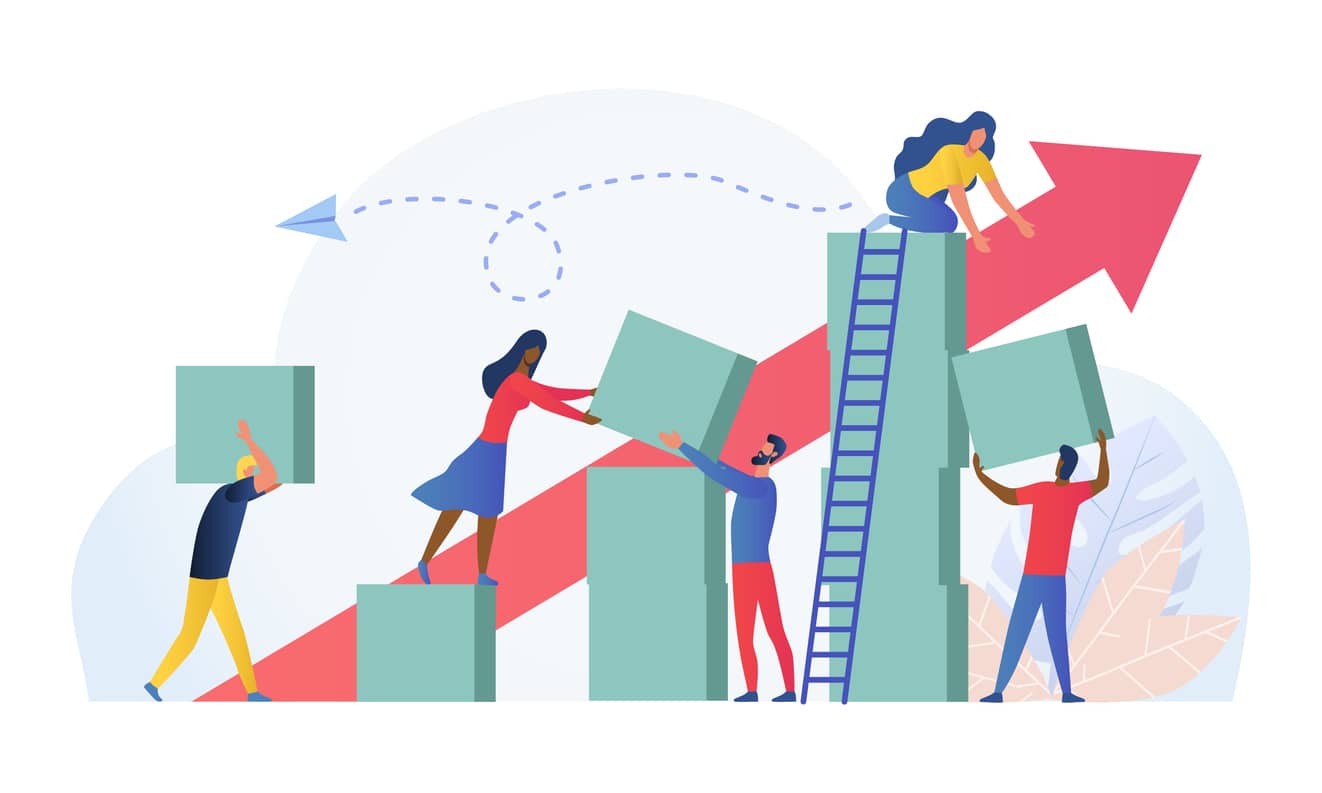As service providers, accountants have always paid close attention to providing exceptional client service to their clients. While that’s still imperative, client service is not enough.
In recent years, talk of a broader client experience has begun to take hold in the industry. This strategy grew in importance in light of the coronavirus pandemic when face-to-face interaction was limited and technology proved you could work with a service provider anywhere in the world. Finding a way to ensure every interaction a client has with your firm is intentional and unique is now an essential part of client retention.

In a perfect scenario, a firm would have a 360-degree client experience where every interaction from prospect to ex-client is continuous. Each experience is carefully evaluated with methods put in place in a calculated way to influence the client’s impression of working with you and how working with you makes them feel. You’d use internal data and surveys to measure yourself as you strive to provide better experiences regularly.
If that sounds daunting, that’s because it is! Instead, work on improving one aspect of the client experience at a time until you eventually get to that holistic view. You will reap the benefits that come with every improvement along the way.
1. The stages of the client experience
Client experience gets pretty granular and can look, and should look, at every aspect of what you do. That’s why no two firms will have the same client experience—they have different people, processes, technology, beliefs and so much more that will influence their client experience program. However, when you look at client experience, consider the following stages:
1. The pre-client experience – Every interaction you have leading up to the “yes.”
2. The client experience – Every interaction a client has with any member of the firm at any point in time from the moment they agree to work with you.
3. The rehire decision – What influences a decision to hire you for an additional service or to hire you again for the same service.
4. The former client experience – How you off-board a client and how you may continue to engage with them in the future.
Pay special attention to those points in a client journey when work is handed off between departments. In many firms, professionals don’t focus on who will touch the work next. Perhaps you’ve seen this when tax professionals think auditors should ask for something while on-site to help with the tax return. Or when your CAS team has wrapped up a client’s year end but has not let your tax team know to start the return. These hand-offs are ripe for improvement that won’t just make your clients happy, but will truly be an unexpected delight.

Now, these stages all have many processes attached to them—all which would be worth improvement efforts. For example, the first step for a new client might be an onboarding process. You also have the presentation of the initial deliverable which may look different than future deliverables to the same client. And for new clients, there may be a process that recognizes who referred the company to you and a survey post delivery to see how you did. There are lots of individual parts of the overall experience in this instance. Improving any, and eventually all, of them would make a significant impact on the client’s perception of your firm.
2. Start with a single process
Identify that one process you want to start with as you begin to build a customer experience. Set parameters around it. Think of them like a goal post in which you will only look at a process between the two posts. This could be, for example, what happens from the signing of an engagement letter through the start of an audit. The items outside your goal posts are projects for another day.
Put together a cross-functional team of people from various areas in your firm. Task them with reviewing what you do currently, and then coming up with ways to change the process. This team of people know the process best and are most impacted by changes, so their buy-in to the development of a new process is instrumental. An outside professional or even a member of your marketing team would be a valuable addition to ensure you’re looking at the whole picture, especially from the eyes of your customers.
3. Focus on the voice of your customers
Your process needs to take into consideration what your customers want from you. Your clients, who are your external customers, are only part of the equation. You also have to pay attention to internal customers who are the next people in a process. For example, it’s the first person to touch a tax return after the CAS team has completed the year-end financials. Or the first person to have an interaction with a client account upon receiving a signed engagement letter.
In any process there are steps that add value to these customers and those that don’t. You want to focus on identifying those that do add value and reducing or eliminating those that don’t. Then build your process in a way to meet the demands of those internal and external customers.

It may seem overly simplistic, but you need to ask: “What does the [internal or external] customer want?” Don’t assume you know this answer. You need to ask to find out for sure. That could include a phone/video call or visit to X number of clients. Or it could be a survey to the clients to find the answers. Or reviewing information collected in a prior survey. What you think matters and what actually does may not be the same.
4. Look to continuously improve what you do
With a new process in hand, be sure to train internally; likely multiple times to reinforce the process. Set measurement criteria so you can determine if your changes are helping you reach your goals. And get your team back together in the future, perhaps six months out, to revisit the process and ensure no other tweaks are needed. This is not a set it and forget about it process. You can always do more to ensure happy internal and external customers so don’t be afraid to make changes immediately and overtime to do what you do even better.
Creating a client experience doesn’t have to be daunting. Start with a single process. That process will open your eyes and ears to additional processes that need to be developed or reengineered. Before long, you’ll begin to have a more holistic client experience. Layer on that exceptional client service you’ve instilled in your team, and you’ll have more loyal existing clients, more people who want to work with you and higher revenues.
Canopy is a one-stop-shop for all of your accounting firm's needs. Sign up free to see how our full suite of services can help you today. 

Katie Tolin is president of CPA Growth Guides where she helps firms and other businesses in the accounting industry connect the dots between strategy and action to ensure they receive a positive ROI for their growth efforts.
READ MORE BY Katie






Get Our Latest Updates and News by Subscribing.
Join our email list for offers, and industry leading articles and content.